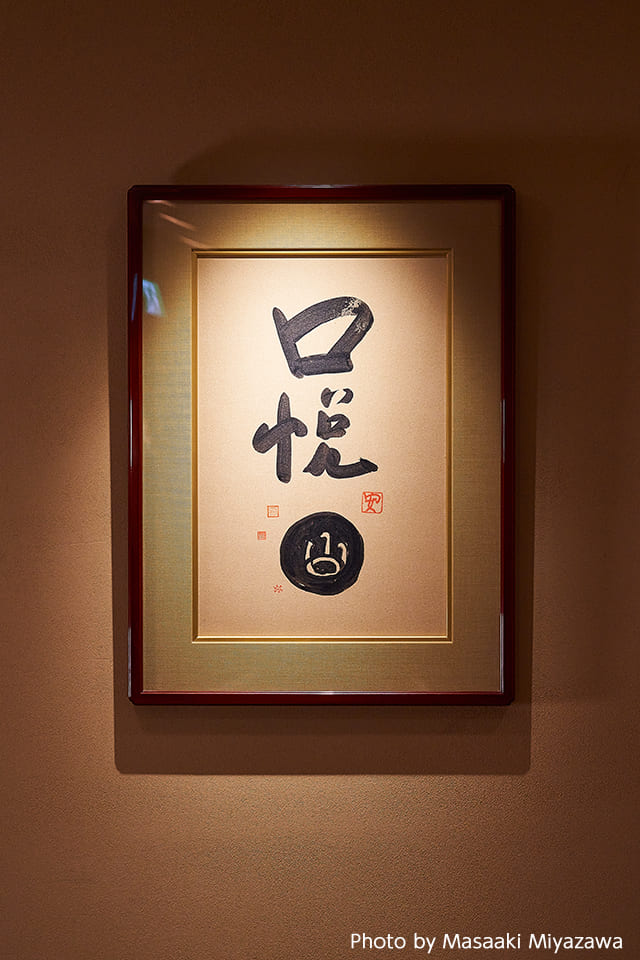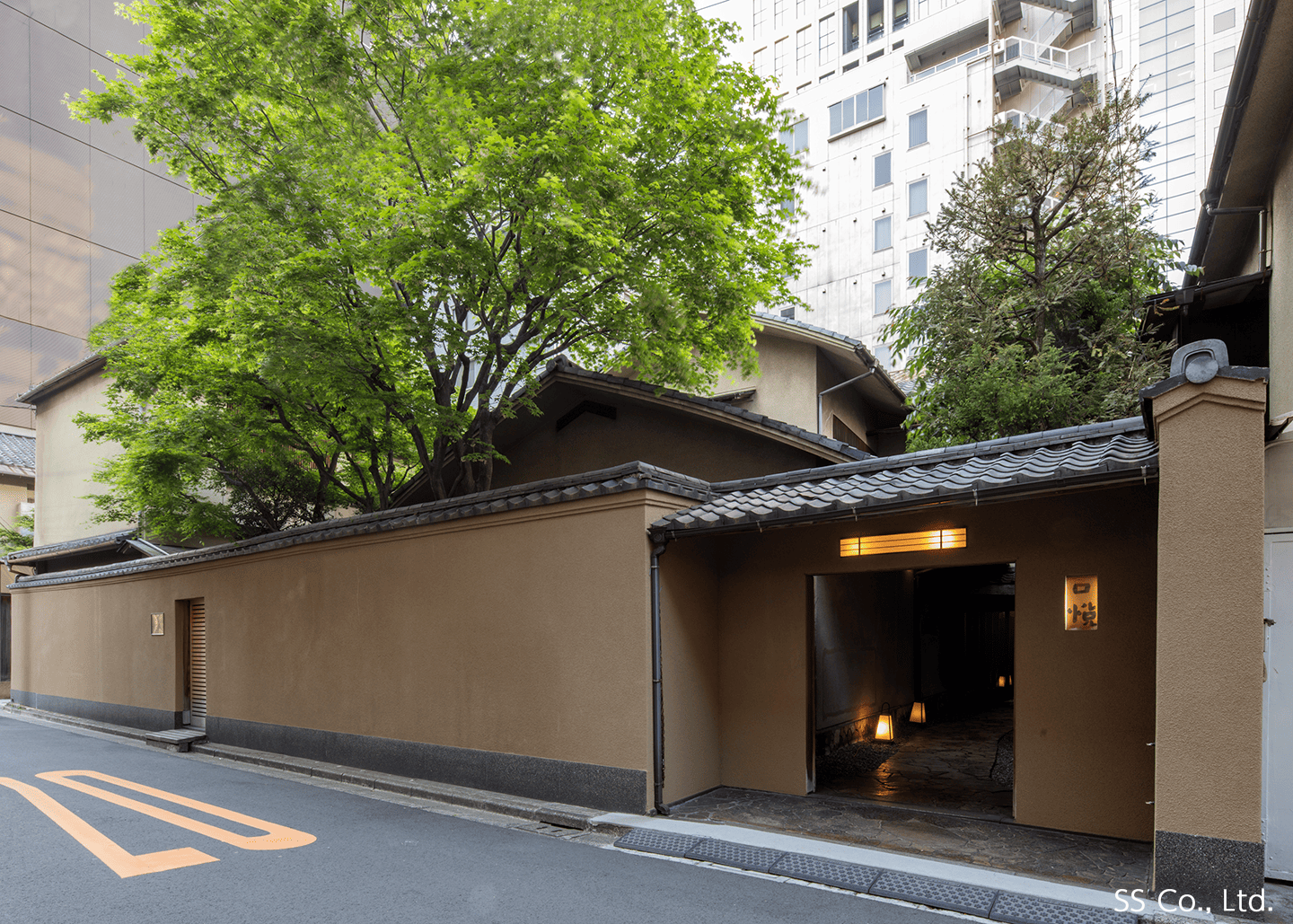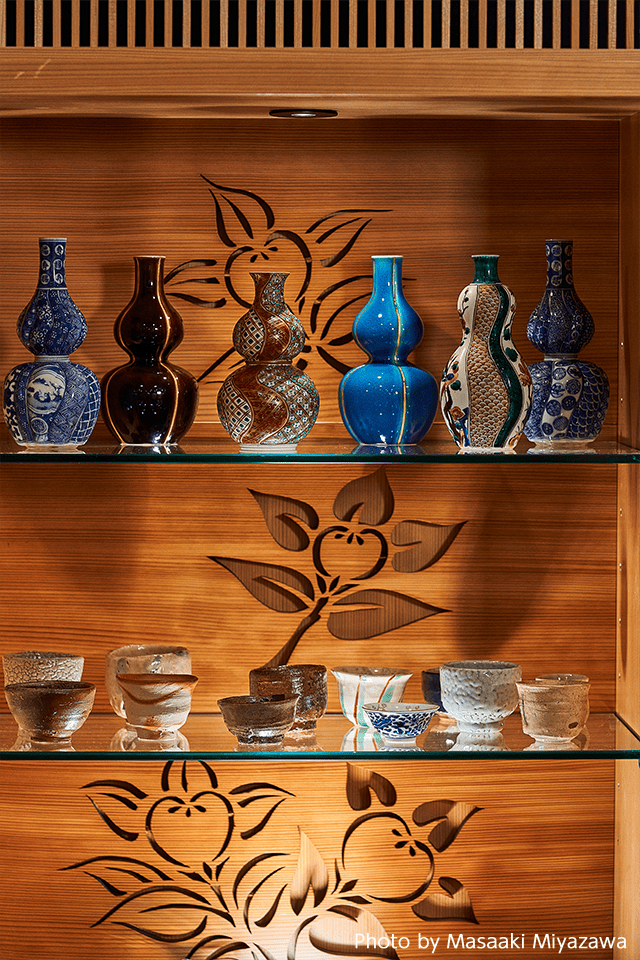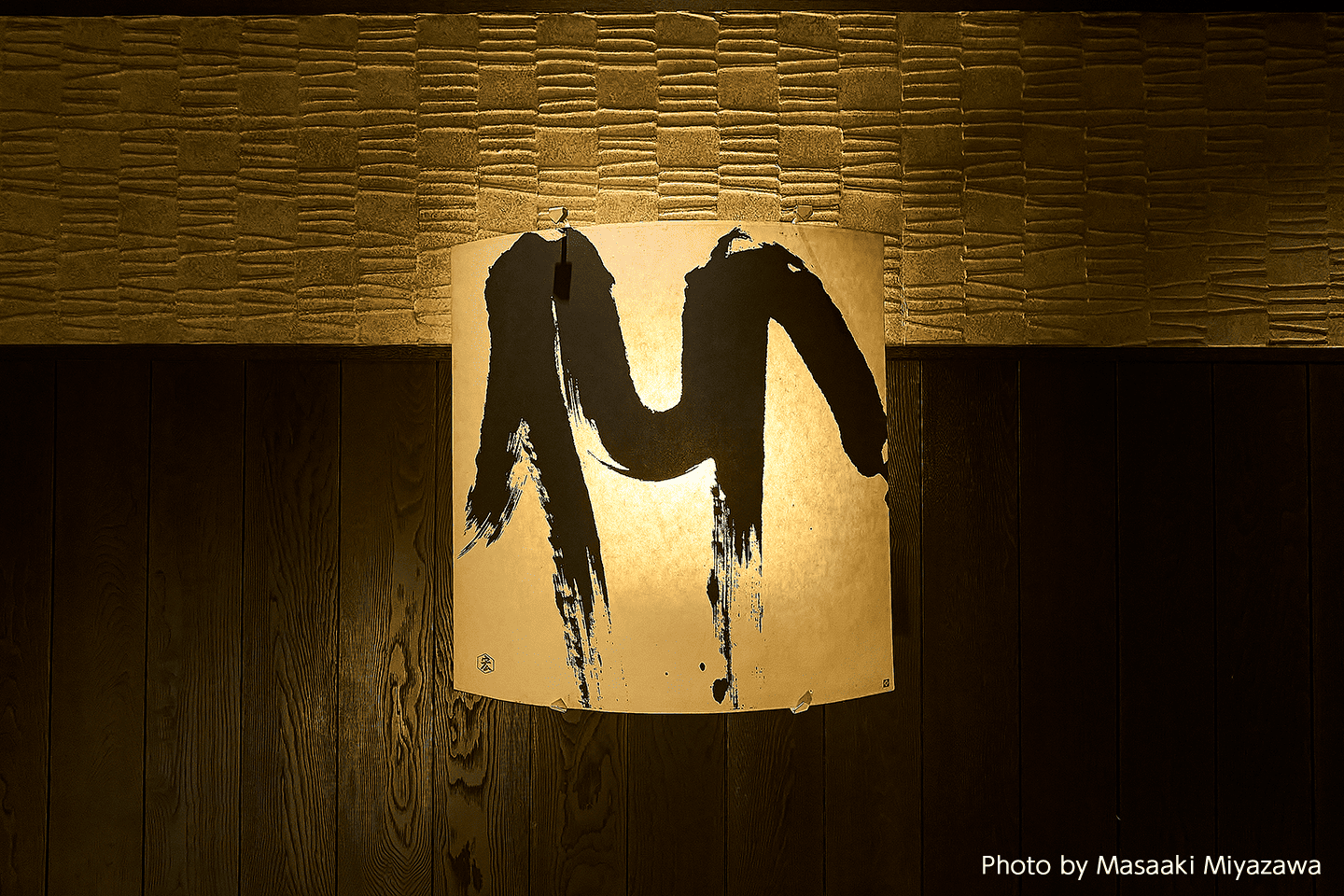ABOUT
- HOME
- ABOUT
The Kouetsu Story
~ From the Past to the Present ~
Photo: Masaaki Miyazawa
Once a renowned ryotei that made its name in Akasaka, Kouetsu lives on today as the kappo restaurant Akasaka Kouetsu, now welcoming guests on the ground floor of a modern building.
Passing under its noren curtain, you’ll find a stone-paved approach softly lit by paper lanterns.
From the counter seats to the wooden doors, every detail evokes the timeless atmosphere of the original Kouetsu, inviting guests to feel as though they’ve stepped back into that elegant past.
Founding
Before founding the ryotei, the first proprietress, Junko Watanabe, operated a small restaurant named Kouetsu, a kappo-style dining establishment much like the one that exists today.
When she decided to open her own ryotei, film director Yasujiro Ozu, with whom she had long been acquainted, bestowed the name “Kouetsu” — expressing the wish that “the mouth may find joy.”
In 1962, in Akasaka where countless ryotei once stood side by side,Junko Watanabe opened Kouetsu on the former site of Hasegawa, the ryotei run by her mother.
The building, crafted in the authentic sukiya style, was complemented by a meticulously maintained garden, reflecting the changing colors of each season.
It featured six private tatami rooms, a kappo counter known as the “Koshikake,” and a bar lounge.
From the guest rooms, visitors could admire the garden as water gently cascaded from a suiban basin, filling the air with a soothing, refreshing sound.
And above all, there was the delicate, attentive hospitality of the proprietress herself.
Over the years, Kouetsu welcomed prime ministers, politicians, and business leaders.
It was here, in this refined ryotei, that discussions about Japan’s future were held and ideas for entertainment ventures may have been conceived.
This is the ryotei cherished by distinguished figures from every sphere of society.
“Back when I was in high school, I didn’t want to inherit the ryotei,”
the proprietress recalled.
“But after starting a small restaurant, I gradually came to appreciate the charm of running a ryotei and following in my mother’s footsteps as a proprietress. Fortune smiled upon me, and I was given the opportunity to open my own ryotei.”

When the restaurant was named Kouetsu, film director Yasujiro Ozu personally inscribed the calligraphy for the sign.
Since then, it has watched over the restaurant, and even today, it is proudly displayed at Akasaka Kouetsu.

The Akasaka ryotei Kouetsu welcomed countless guests over the years.
Many of its memories and building materials were carried over to the current kappo restaurant, Akasaka Kouetsu.
Cuisine
One of the pleasures of a ryotei lies in the luxury of savoring the seasons ahead of time. It is a place where guests can enjoy the flavors of each season just before ingredients reach the market.
At Kouetsu, guests are welcomed with traditional Edo-style kaiseki that highlight seasonal ingredients. The restaurant has always valued not only incorporating seasonal produce as early as possible but also a genuine dedication to taste and sourcing the very best ingredients. This strong commitment to “seasonality” and “flavor” continues today at Akasaka Kouetsu.
Above all, Kouetsu offers an abundance of home-style individual dishes. “At a ryotei, guests usually enjoy set courses. However, after several visits, some may tire of the same routine. And for guests visiting multiple restaurants in a day, eating full courses can feel heavy. It was in response to requests of ‘I just want to eat what I like’ that we began offering more flexible, home-style dishes,” the proprietress explains. “Some guests now enjoy the restaurant like a high-end izakaya, and I would tell them, ‘If we have the ingredients, we can make anything you wish.’ This is how our home-style menu grew.”
These individual dishes, born at Kouetsu, have been carried over to Akasaka Kouetsu, where they continue to be beloved by many guests.
Architect Kisho Kurokawa was also a regular, visiting Kouetsu to enjoy these home-style dishes. “The far right end of the counter was always kept free because it was reserved for Mr.Kurokawa. Even after we relocated, many guests still say, ‘This is Mr.Kurokawa’s seat,’” the proprietress recalled fondly, gazing at the counter with a smile.
Preserving the Atmosphere
In 2017, due to the proprietress’s health, the ryotei Kouetsu closed its doors, much to the regret of many.
However, driven by her own desire to continue and the encouragement that “a smaller restaurant would be less of a burden,” Akasaka Kouetsu was born at its current location. The counter, lounge, approach, and even the door to the Koshikake were all carefully relocated and faithfully recreated from the original ryotei.
The decorative ranma panels from the old tatami rooms were incorporated into small storage doors, and throughout the restaurant, traces of the former Kouetsu can be found. Longtime patrons often beam at the interior, delighted to see that it still feels just like the original ryotei.
Later, as the proprietress retired due to age, the restaurant was temporarily closed. Thanks to the heartfelt dedication of the current owner, Akasaka Kouetsu reopened with its staff and interior faithfully preserved.
Like a mythical phoenix, it has risen anew, continuing to serve as a serene gathering place where distinguished figures from every field still come together.
It is not just the building or the cuisine, but the people’s passions and the spirit of the times that have shaped the charm of a ryotei.
Today, Akasaka Kouetsu continues to serve the same exceptional food, offering a space that bridges the past and the present.

The approach of the original ryotei Kouetsu has been faithfully recreated at Akasaka Kouetsu.

The decorative ranma panels that once adorned the tatami rooms have been repurposed as built-in shelves, continuing to welcome guests as they enjoy their meals.

At the entrance to the kappo counter, the characters for “Koshikake” were written by painter Kazumasa Nakagawa. He took up the brush himself, joking that “’Koshikake’ sounds more interesting than ‘Koshikake’” and inscribed the name.

The character for “Take” displayed in the lounge was written by Hiroshi Teshigahara, the second-generation head of the Sogetsu School, who was a frequent guest at Kouetsu.
